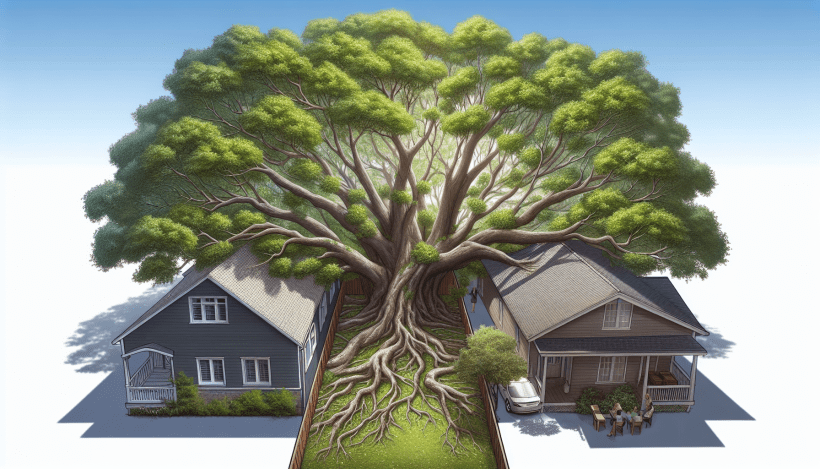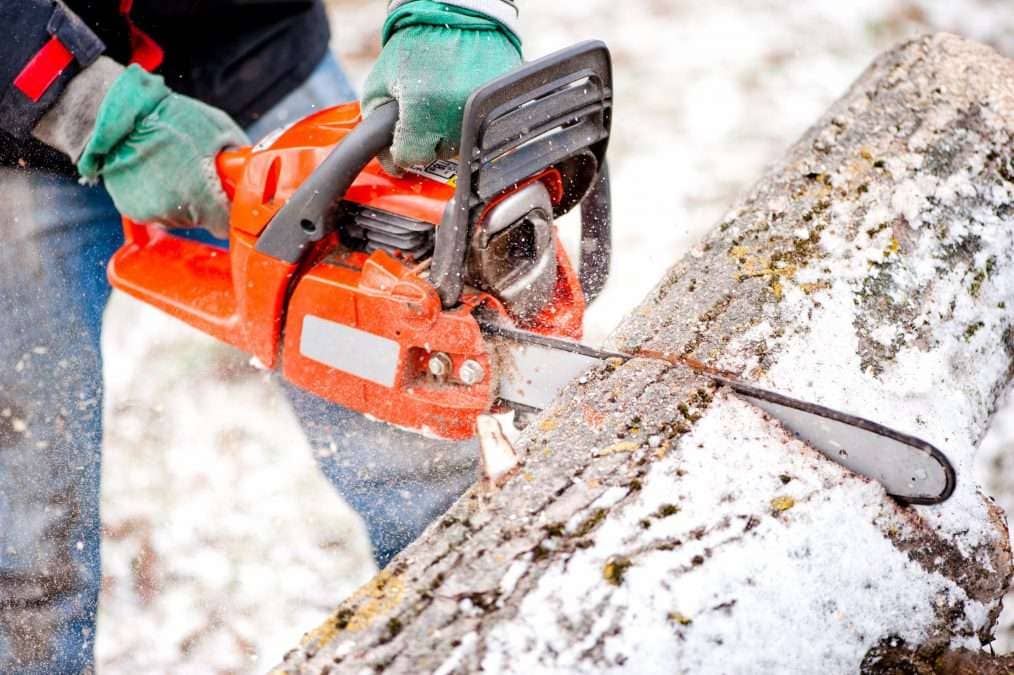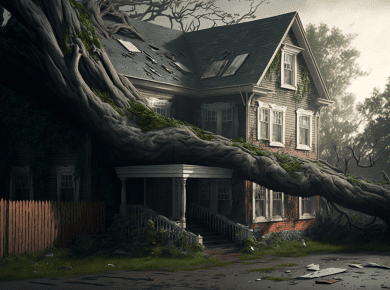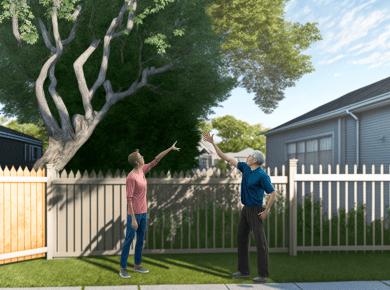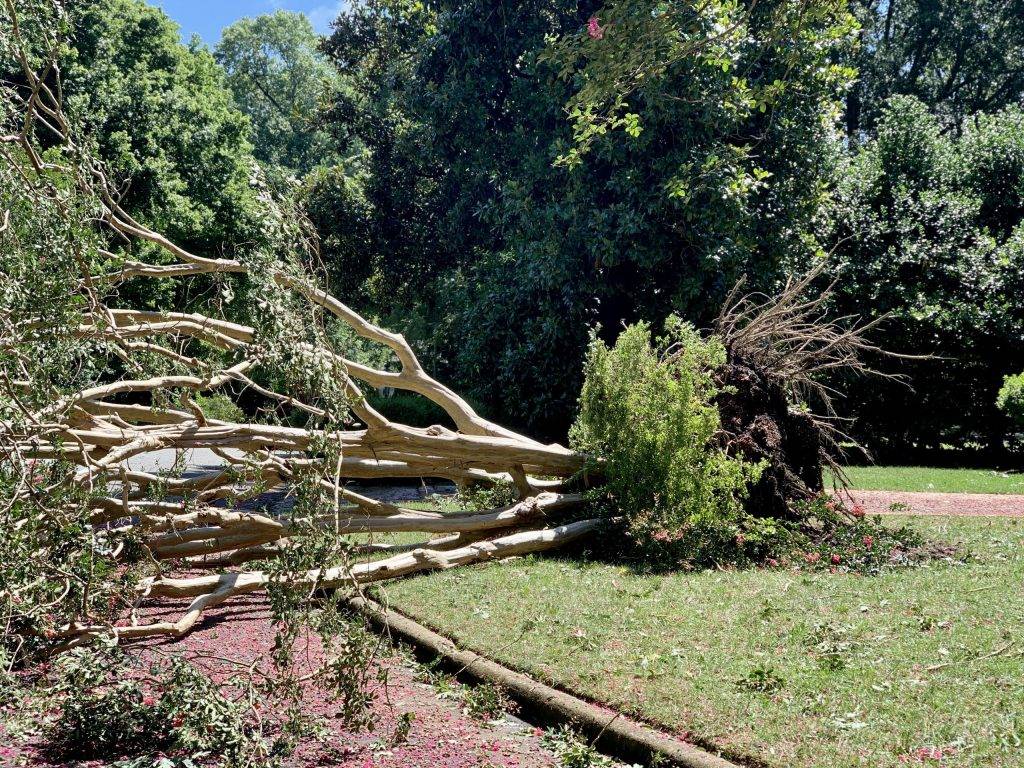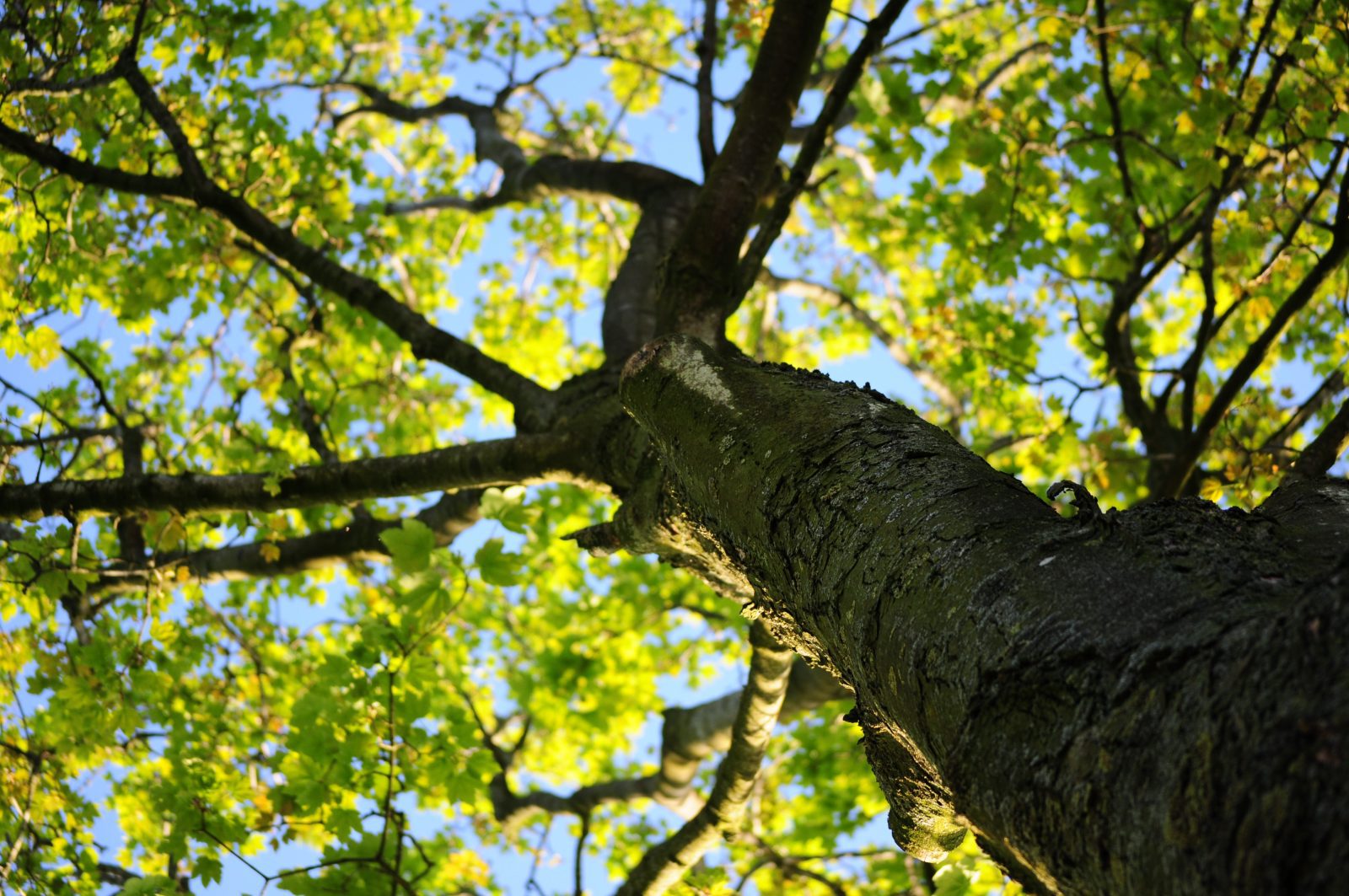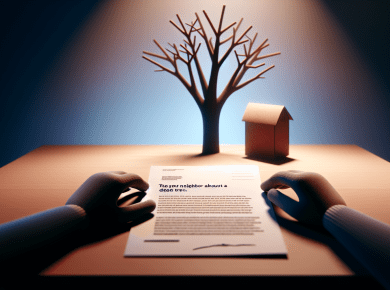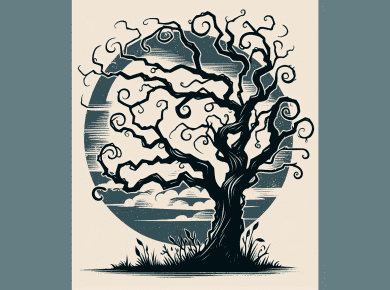Who Actually Owns That Tree in Ohio?
Dealing with the neighbor’s tree that seems to think your property is its personal playground? Oh, Ohio. Let’s figure out who actually owns that leafy troublemaker and what you can (or can’t) do about it.
Decoding Tree Ownership
In Ohio, it all boils down to where the trunk is. If your pesky pine is planted squarely within your neighbor’s yard but its branches are mooching off your sunlight, tough luck, buddy. That tree is theirs, root to tip. But, if the trunk grows exactly in between your property and theirs— congratulations, you both get joint custody. It can feel like a hassle, but knowing who’s who in the tree world makes dealing with these arboreal invaders a lot easier.
Here’s a quick cheat-sheet:
| Situation | Who’s the Boss? |
|---|---|
| Trunk on Property A | Property A’s problem, err, tree. |
| Trunk straddles line | Property A and B – dual custody time! |
| Branches/Roots alone on Neighbor’s Property | No ownership for Neighbor—just permission to trim. |
Your Rights and Responsibilities
So, what if those tree branches are having a party over your side of the fence? You have the right to give those freeloaders a trim. But, hold your horses, Paul Bunyan! You have to do it carefully. Reckless trimming like you’re on a rage-fueled lumberjack spree could get you in trouble.
Now, if the tree is a “shared” asset sitting right on the property line, it’s a whole different kettle of fish. You need a green light from your neighbor before you take any drastic steps, like chopping it down to build that dream pool. Go rogue, and you’re looking at some serious fines or even having to pay triple the tree’s worth—ouch.
So, understanding who owns what, and playing nice when it comes to shared trees, can prevent headaches and keep the peace. If your neighbor’s tree is long dead and threatening to make an unsolicited visit through your roof, try talking it out. Send them a friendly note if a face-to-face chat feels too awkward. Being neighborly about it can often work wonders.
Keep this guide in mind, and may your property be safe from any unsolicited tree shenanigans!
Homeowner Associations (HOAs) Overview
Homeowners associations (HOAs) can sometimes feel like the bossy hall monitor of your neighborhood, but they play a big role in keeping things shipshape. If you’re dealing with that old chestnut of a neighbor’s tree over property line, knowing what the HOA does can really help.
What Does an HOA Do?
Think of the HOA as the watchful friend who keeps the neighborhood looking good and running smoothly. They manage things like your lawn looking like a scene from ‘Jumanji’ or that neighbor with a car graveyard on his lawn. They lay down rules to keep your neighborhood neat and pleasant. And yes, this includes rules about trees and yard stuff that might bug your neighbors.
The HOA board has the power, like a mini-government, to enforce the rules found in what they call the Declaration of Covenants, Conditions, and Restrictions (CC&Rs). So, if there’s a tree ready to drop dead weight onto your property, these are the folks to know. Getting a grasp on what your HOA can do is your superpower when dealing with stuff like unruly trees or neighbor disputes.
| What They Manage | What It Means For You |
|---|---|
| Keeping Things Tidy | Makes sure everyone’s lawn is mowed and looking good. |
| Rule Enforcers | They make sure the community rules get followed. |
| Neighbor Mediators | Help work out property-based scuffles. |
Deciphering HOA Rules and CC&Rs
The CC&Rs are like the HOA’s playbook. When you bought your place, you signed up to play by these rules. They tell you what you can and can’t do in the neighborhood. If you’re stressing about a dead tree on your neighbor’s yard, the CC&Rs have guidelines that you’ll want to check out.
There’s also the Architectural Review Committee (ARC) — think of them as the style police for your property. They’re the ones who give a thumbs-up or down on changes to your yard that might change how the place looks. So, before you plant a forest or put in a giant gnome, you might need their blessing.
Here’s the lowdown on some typical parts of the CC&Rs:
| Rule | What It Means |
|---|---|
| Lawn & Yard Care | Tells you how to keep your grass green and trees in check. |
| Parking Rules | Where you can and can’t leave your car. |
| Home Modifications | Guidelines for home improvements that affect the exterior. |
When you’ve got beef about a neighbor’s tree posing a threat, it helps to dig into the CC&Rs. The HOA can help sort things out and smooth over any neighborly frictions. And if you need to send a note about that dead tree next door, check out our sample letter to neighbor about dead tree for some tips on how to word it without sparking World War III.
Got all that? Good—now you’re equipped to handle the HOA like a pro. Happy neighborly living!
Know Your Rights: Tree Trimming Legalities in Ohio
Dealing with a neighbor’s tree that’s creeping over your property line? Knowing the dos and don’ts can save you a lot of headache. Here’s the lowdown on what you can and can’t do when it comes to trimming those pesky overhanging branches in Ohio.
Snipping Overhanging Branches
Got branches from the neighbor’s tree encroaching on your yard? Yep, you can trim ’em. But, you gotta do it with some caution. Mess up, and you’re looking at potential trouble, especially if you hurt the tree or cause it any harm. The rule of thumb? Treat cutting those branches like performing delicate surgery—don’t be reckless.
| Action | Description |
|---|---|
| Trim Overhanging Branches | You’re good to go on trimming branches hanging over your property. |
| Exercise Reasonable Care | Be careful! Damaging the tree can get you in hot water. |
| Obtain Permission | If the tree is on the boundary or you’re doing major cutting, ask first. |
Need more pointers on keeping things cool with your neighbor? Check out our tips on resolving tree disputes with neighbors.
Who Owns the Tree?
In Ohio, if the trunk is on your side, the tree’s yours—roots, branches, and all. Even if parts of the tree end up in your neighbor’s yard, it’s still your tree. Trees growing right on the line between properties? That one’s a team effort—you and your neighbor both have a stake.
Here’s the nitty-gritty:
- Branches or roots invading a neighbor’s yard don’t mean they own part of your tree.
- Ohio Revised Code 901.51 says: don’t hack down or mess up someone else’s tree. Do it, and you could owe three times the tree’s value. Ouch!
- Better safe than sorry: get your neighbor on board before chopping anything significant on shared trees or those close to the line.
Got a dead tree hanging out on your neighbor’s turf and it’s making you nervous? Tread carefully and kindly—everyone’s rights deserve respect. For a helpful template on how to address it, see our sample letter to neighbor about dead tree.
Follow these simple guidelines, and you’ll navigate tree trimming like a pro without turning it into a neighborhood feud.
Sorting Out Neighbor Tree Troubles
Dealing with a neighbor’s tree that’s creeping over your fence can be a bit touchy. You’ll need to know your rights and theirs to sort things out smoothly.
Tackling Neighbor Tree Problems
When your neighbor’s tree starts playing peek-a-boo over your yard, talking it out is step one. Keep the chat friendly and straightforward. If the tree looks like it might cause trouble or is already a dead eyesore, write a letter. And hey, we’ve got you covered with a sample letter for neighbor about dead tree, just in case.
Tips to make the conversation easier:
| Tip | What to Do |
|---|---|
| Snap Some Pics | Take photos and note any damage the tree has caused. |
| Chat It Out | Have a respectful discussion with your neighbor. |
| Suggest Fixes | Offer ideas like trimming or chopping down the tree. |
| Think About Mediation | If talking doesn’t work, mediation services can help both sides cool down. |
Knowing property rights is key. In Ohio, if a tree straddles the line between properties, it’s basically a joint custody situation. Both neighbors get a say, and no one can make big changes without a thumbs-up from the other (OSU Extension).
Who Pays When a Tree Goes Rogue?
The blame game can get real when a neighbor’s tree causes damage. Ohio laws have some clear rules:
- You can trim branches that hang over your property, but be careful to avoid hurting the tree or causing more damage.
- If you go too far and end up hurting the tree or causing damage, you could end up paying a penalty.
Here’s what you could face:
| Mess-Up | Penalty |
|---|---|
| Trespassing while trimming | Might catch a fourth-degree misdemeanor charge, up to $250 fine, or even 30 days in jail. |
| Wrecking the Tree | Could have to pay up to three times the tree’s value if you mess it up bad. |
Sorting out tree tiffs needs a bit of finesse. Be smart, be fair, and consider mediation if things get heated. It’ll help you keep neighborly peace and make sure you’re on the right side of the law. Looking for more advice? Check out our tips on resolving tree disputes with neighbors.
